10 Tips for Increasing Nutrient Absorption
Helpful tips and tricks for increasing the nutrient absorption and digestibility of different foods on a vegan diet. Includes PDF chart with quick examples.
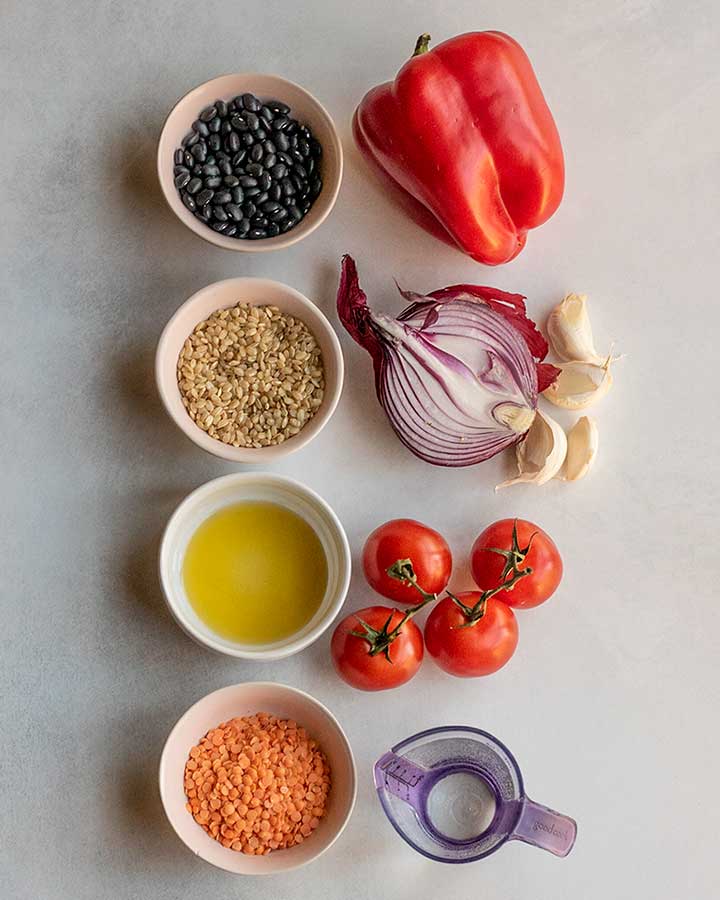
Let’s talk about nutrient bioavailability. It’s a concern that has come up frequently the more I share plant-based recipes. Do vegan foods have less nutrient bioavailability? Yes and no. It’s not a clear cut answer because there is a lot to be considered. The body is very complex and the tools available for measuring what we are absorbing don’t always take the full picture into consideration.
There are many things that can negatively impact nutrient absorption. On the other side of the spectrum, there are a lot of things you can do to help improve nutrient absorption. First things first, let’s talk about the general things that impact absorption for everyone, not just vegans.
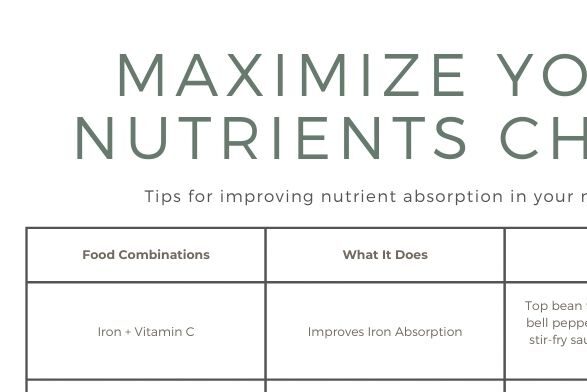
>> Download Your Reference Nutrient Absorption Chart <<
What Impacts Nutrient Absorption
- Inhibitors. Some vitamins and minerals can be bound to compounds found in plants that inhibit absorption. These compounds include phytates, oxalates, lectins, tannins, etc.
- Age and life cycle considerations. Your absorption rates for various nutrients can be impacted and changed throughout your life. Nutrient needs vary and change throughout childhood, with pregnancy and as we head into old age.
- Competing nutrients. Some nutrients are better absorbed in or out of the presence of other nutrients. This might result in you needing to take in certain nutrients/supplements between meals to better absorb specific nutrients.
- Existing nutrient deficiencies. Our bodies adapt to a lot of internal changes including when we are deficient in a nutrient. For example, if you have low ferratin levels (iron stores), your body will start to absorb more iron from plant-based sources compared to when your stores are normal.
- Dosage. How much or little you consume of a nutrient also impacts how much you may absorb it. Some nutrients are better absorbed at higher doses like B12, whereas other nutrients like calcium, iron or zinc are absorbed better when smaller doses are taken throughout the day.
- Stress. We often underestimate how much stress can impact digestion. Beyond just changes in the types of foods we may gravitate towards, some research suggests that stress can lead to increased metabolic needs for certain nutrients.
- How you eat. Chewing, stomach acid production, the enzymes your body uses to break down food can vary person to person and throughout the lifecycle.
- What foods you’re eating together. We don’t eat foods in isolation, we generally vary the types of foods we are consuming throughout the day. There are also many different ways in which we prepare and pair these foods together, which can impact how that food is digested.
- Medical interventions. Different medications you take or different medical procedures you get can impact how well you absorb nutrients. For example, if you get gastric bypass, this alters the route and ability for your body to absorb nutrients normally. As a result, you will need to take specific supplements to fill in many of the vitamin and mineral gaps.
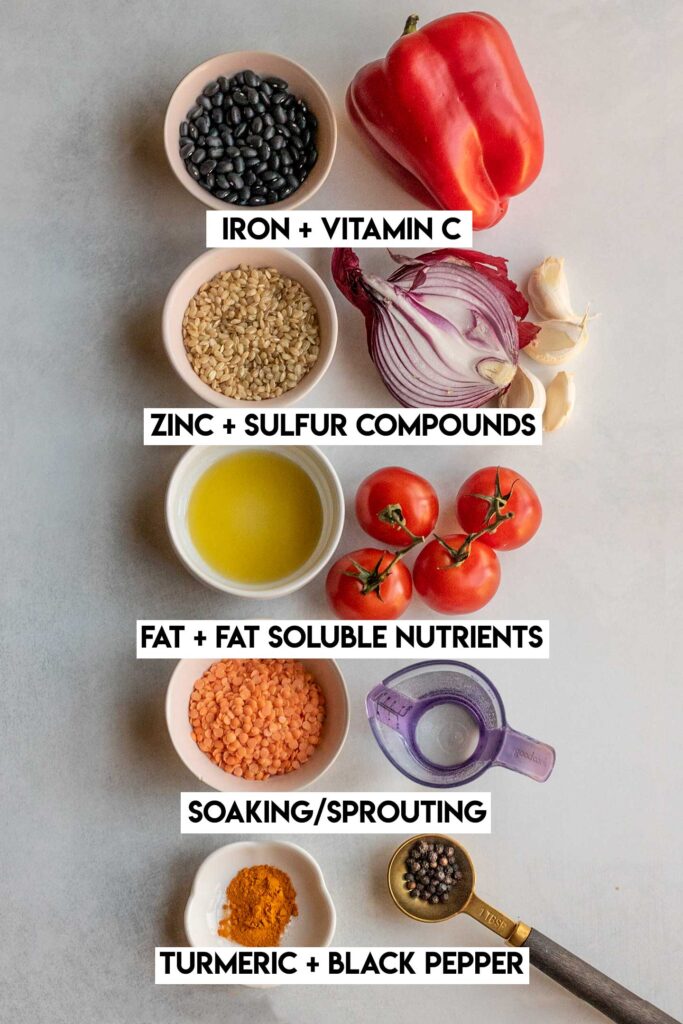
10 Tips for Increasing Nutrient Absorption
So now that we know what can impact absorption, how can we make the most it? There are different strategies available to help maximize absorption of vitamins, minerals, antioxidants and even protein.
Vitamins, Minerals and Antioxidants
Iron + Vitamin C
I have expanded on this discussion in my Guide to Iron for Vegans. Ultimately, combining foods high in vitamin C with iron-rich foods can help maximize iron absorption. Aim for foods with 50 mg or more of vitamin C. This can look like 1 kiwi fruit, 1/4 cup of bell peppers or 3/4 cup of citrus fruits like oranges, broccoli, brussels sprouts, cauliflower, collard greens, cantaloups, strawberries or even a big salad.
Fat Soluble Vitamins and Antioxidants + Fat
There are many examples of the benefits of combining fats with foods containing fat soluble vitamins and antioxidants. One that is particularly impressive is combining tomatoes with a fat (think cooking down tomatoes in a pan with olive oil for a sauce or adding cherry tomatoes and avocado to a salsa). This combo helps to enhance the absorption of the antioxidant lycopene found in tomatoes by 4-fold. And you can get this benefit by combining other carotenoid rich foods (think yellow and orange colored fruits and veggies) with various different fats (oils, avocados, nuts, etc.).
Curcumin + Piperine Turmeric
You might be more familiar with their common names, turmeric and black pepper. One of the main antioxidants in turmeric, curcumin, known for it’s anti-inflammatory is better absorbed when taken together with black pepper. On it’s own, curcumin isn’t as readily absorbed, but adding a small amount of black pepper can enhance absorption of the curcumin by up to 2000%.
Calcium + Vitamin D
Vitamin D helps to better absorb calcium in the diet, which supports our bone health, among other processes in the body. You can get calcium from a variety of fortified foods like calcium set tofu, fortified milks, beverages and cereals as well as low oxalate vegetables like broccoli, bok choy, kale, napa cabbage, watercress, mustard greens and turnip greens. To absorb that calcium, make sure you are keeping your vitamin D levels up through a mix of supplementation, fortified foods or adequate sunlight.
Iron and Zinc + Sulfur
Ingredients like onion and garlic when combined with foods containing iron and zinc help to increase absorption of these nutrients by 50%! The best part, you might already be doing this without realizing it. If you are making a stir fry using grains and sauteing them with onion and garlic or cooking a pot of beans with onions and garlic, you are not only getting more flavor in your food but also benefiting from absorbing more iron and zinc.
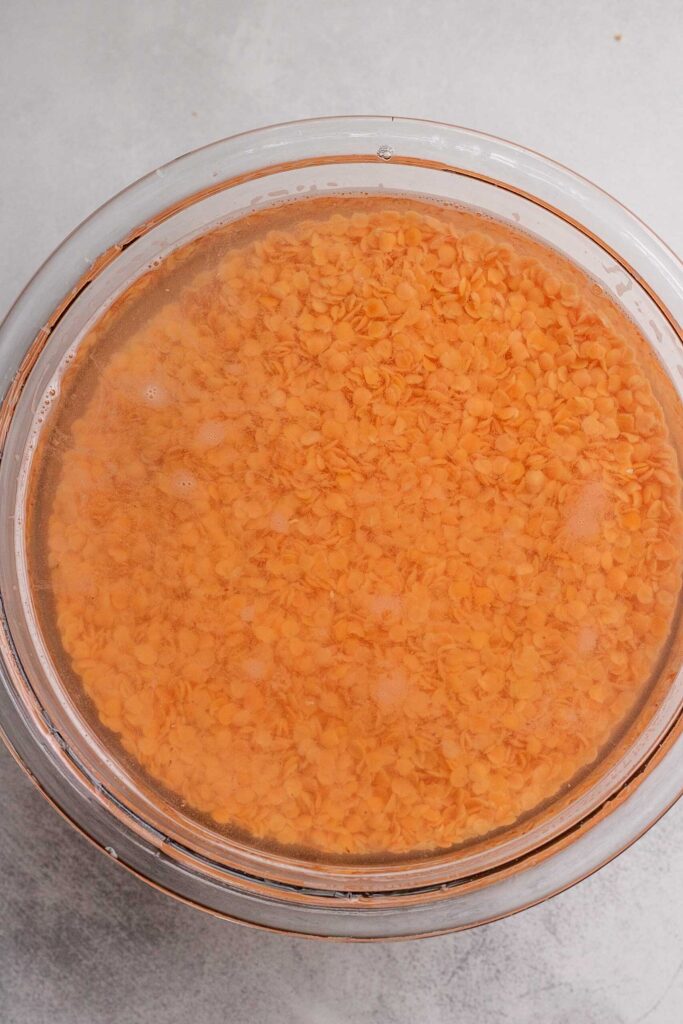
Preparation
Cooking
This is such a complex aspect of nutrient absorption. Cooking absolutely has an impact on what we absorb. In some instances, depending on how something is prepared, you can lose a significant amount of nutrients. However, with the right amount of heat and time, you can enhance nutrients significantly and even reduce inhibitors like phytates and oxalates.
Big take away, cooking is a means to break down some of the fiber and cell walls in plant-based foods, which makes absorbing nutrients a lot easier. Just, don’t over do it and pick the appropriate cooking method to enhance absorption. Example, cooking carrots helps to make absorbing carotenoids in carrots so much easier compared to when eaten raw.
Grinding or Juicing
The fibers and cell walls in plants are often what decreases the amount of nutrients we absorb from foods. The tougher those cell walls are, the more we struggle to get those nutrients. We already mentioned cooking as a way to reduce this issue, but other things that can help improve absorption are grinding and blending. For example, grinding flaxseeds helps make omega 3s in the seeds more absorbable. Similarly, in the process of juicing we are able to remove fiber, which can make some nutrients like beta-carotene more available for absorption.
Soaking/Sprouting
Soaking and sprouting help reduce common nutrient inhibitors and may significantly enhance nutrient absorption for protein, iron, zinc and calcium. This is a great strategy to use for things like legumes, grains, nuts and seeds, which tend to have lower digestibility on their own. Soaking beans for a few hours in water and then discarding the liquid and rinsing the beans well can help significantly reduce a number of anti-nutrients.
Protein Digestibility
Can you meet your protein needs on a plant-based diet?
You can meet your protein needs using plant-based sources. The main consensus is to eat enough calories to meet your needs, consume a variety of plant based foods, and incorporate 3 servings (1/2 cup cooked) of legumes or some soy foods to help make meeting your protein needs easier.
How do you measure protein digestibility?
Protein digestibility is impacted by many factors that we’ve already discussed so far including nutrient inhibitors, amounts of amino acids available in foods, etc. We actually have protein scoring systems like the Protein Digestibility-Corrected Amino Acid Score (PDCAAS) and the newer Digestible Indispensable Amino Acid Score (DIAAS) that provide some information regarding how we may absorb different proteins. Overall, more isolated proteins have a higher digestibility score compared to more whole food sources of protein like beans.
Should I be concerned about protein digestibility?
It’s important to note that these scoring systems are helpful, but do have limitations. They are based on isolated consumption of certain foods and it’s not a fully comprehensive list. More human based studies are also necessary for accurate interpretation. Current studies are showing that some plant based proteins are comparable to non-plant based sources. For example, research on soy protein and muscle synthesis have shown it is comparable to whey protein. At best, what we can do is take this information and use it to help cover our protein bases. So it is recommend that vegans consume slightly more protein, which is an extra 10% to normal protein recommendations. For reference, we recommend 0.8 grams of protein per 1 kg of body weight for the general population and 0.9 grams of protein per 1 kg of body weight for vegans.
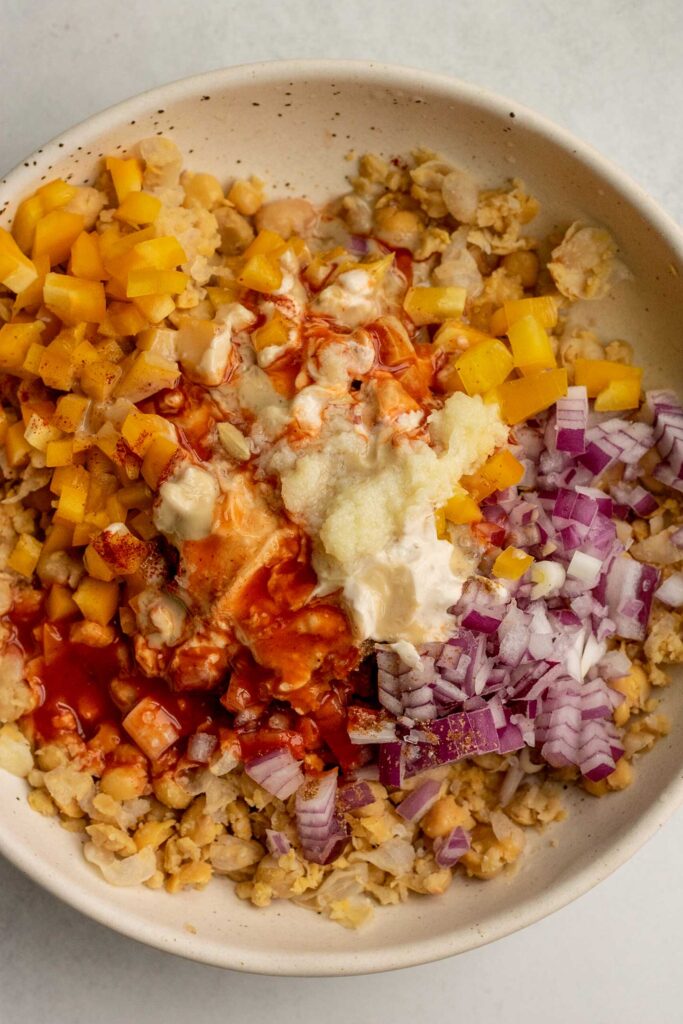
Tips for Improving Protein Absorption
We can also focus on things that can help us absorb that protein better.
- Soaking/Sprouting: This is especially helpful for things like beans, grains, nuts and seeds to help make those proteins more available. Longer soaking periods helps to increase availability even more.
- Variety: We don’t eat food in isolation, so take advantage of combining different foods on your plate to help get the most protein.
- Good Sources of Protein: Include a serving at most meals or incorporate into snacks. This includes soy (tofu, tempeh, soy milks, etc.), seitan, beans, chickpeas, lentils and peas (pea milks or protein powders).
Putting It Into Practice
Focus On What You Can Control
This will be different for everyone. We all live different lives, have different needs and different capacities to take on more things on our plate. There is no pressure to do everything listed in this guide. Take the bits and pieces that apply to you.
If it’s a struggle and a concern, talk with your healthcare providers and discuss options like taking supplements to support your needs. We don’t live in a perfect world or healthcare system, but if you have access to a dietitian that is knowledgeable in plant-based nutrition they can further help with assessing your needs and providing better guidance to help you in your specific situation.
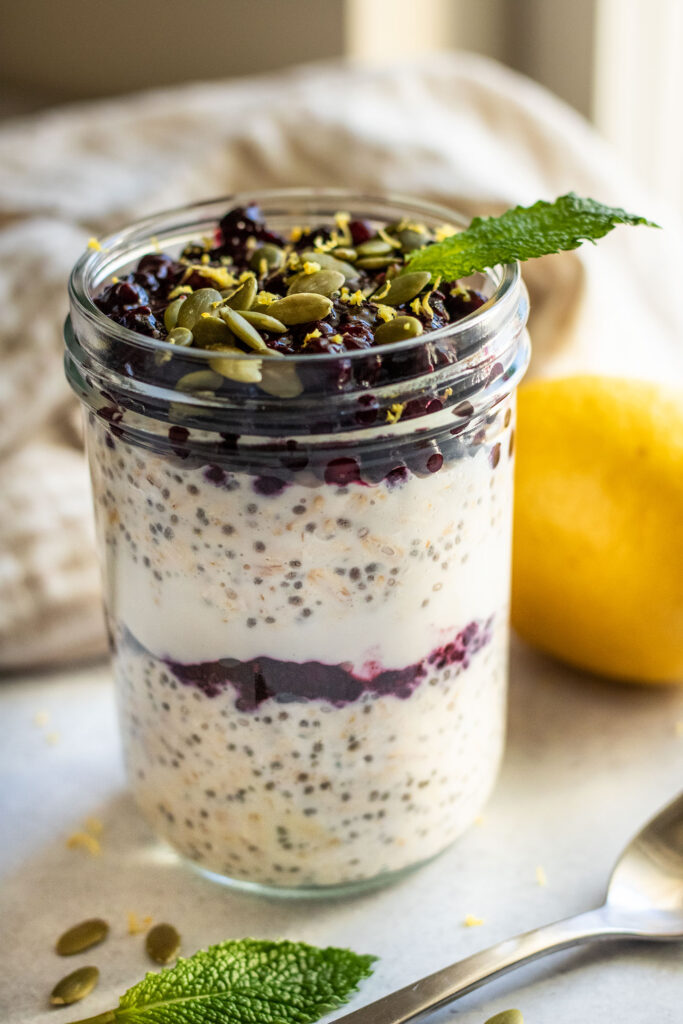
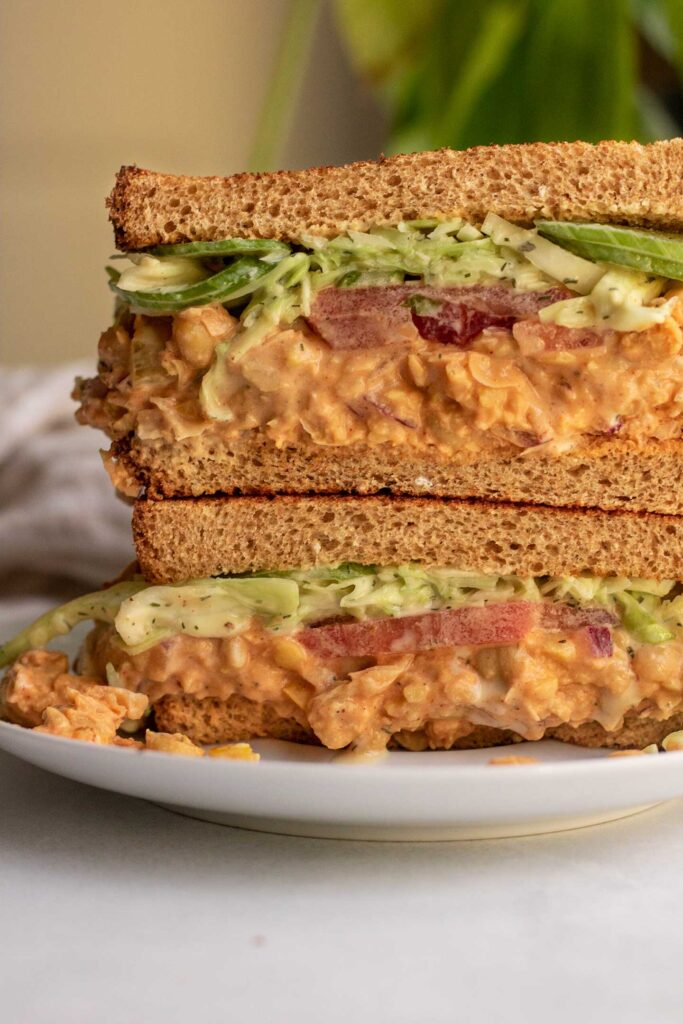
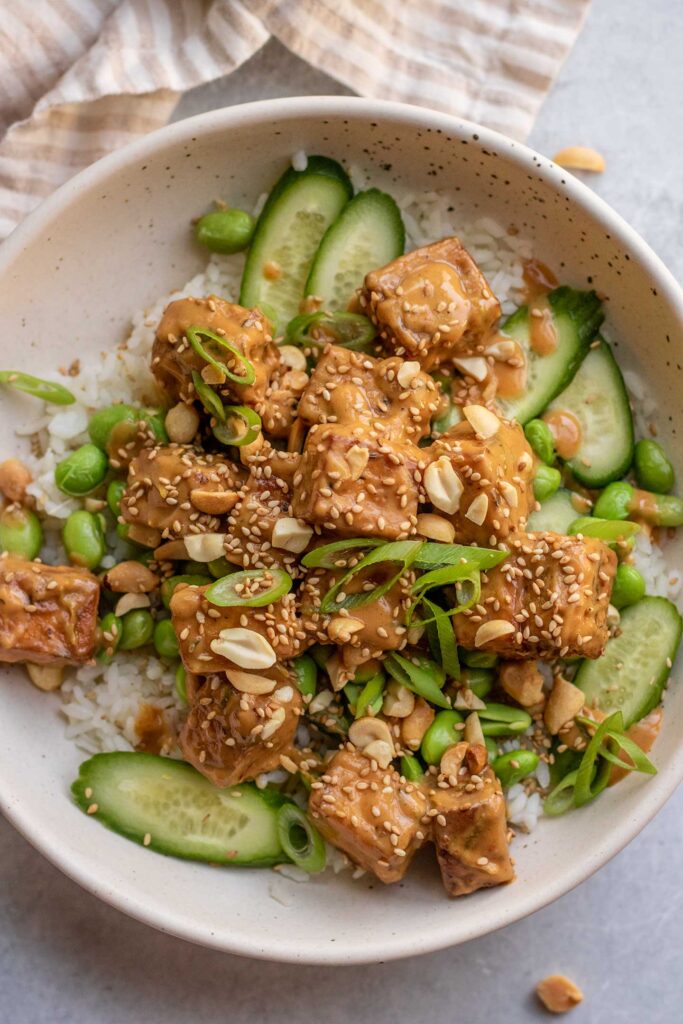
Maximize Nutrient Absorption In Meals
Iron
- Buffalo Chickpea Salad
- Vegan Burrito Bowl with Spiced Lentil Taco Meat
- Orange Tofu
- Citrus Infused Couscous Chickpea Salad
Calcium
Zinc
Protein
Antioxidants
Summary
I think it’s important to end this article by saying, if you are consuming a varied and well planned plant-based diet, being mindful of the nutrients you need to watch out for, and not following extreme diet advice or anecdotes, you’re probably doing just fine.
If you have the ability and accessibility to focus on maximizing nutrient absorption, here are my best tips.
- Include varied whole food plants in a balanced way. You can use the plate method to get a general sense of how to healthfully include your food groups within your main meals to maximize your nutrient intake.
- Make sure you’re consuming enough calories to meet your needs. Remember, your needs can be impacted in various ways, so take that into consideration and consult your healthcare team if making any major dietary changes.
- It’s okay to use supplements and fortified foods. If you’ve tried meeting your needs without supplements and still struggling to meet them, it’s okay to use a supplement. Supplements are there to supplement your diet and help fill in the gaps. Take what you need, and no need for anything fancy, expensive or in excess that your body doesn’t need. That does not make you inadequate or a failure. It means you are responsible and aware of what your body needs.
- Always consult your medical team when making dietary changes. This helps to make sure that your individual needs are being met to the best of your abilities.

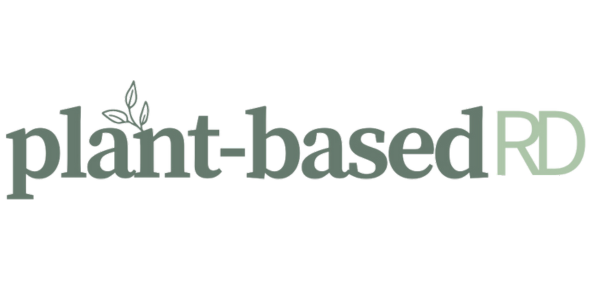
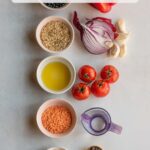
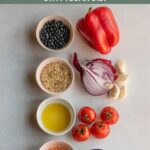
Would like more content that includes nutritional info, facts and tips!
Thank you for the feedback Shira! Will be working to do just this over the coming months. 🙂